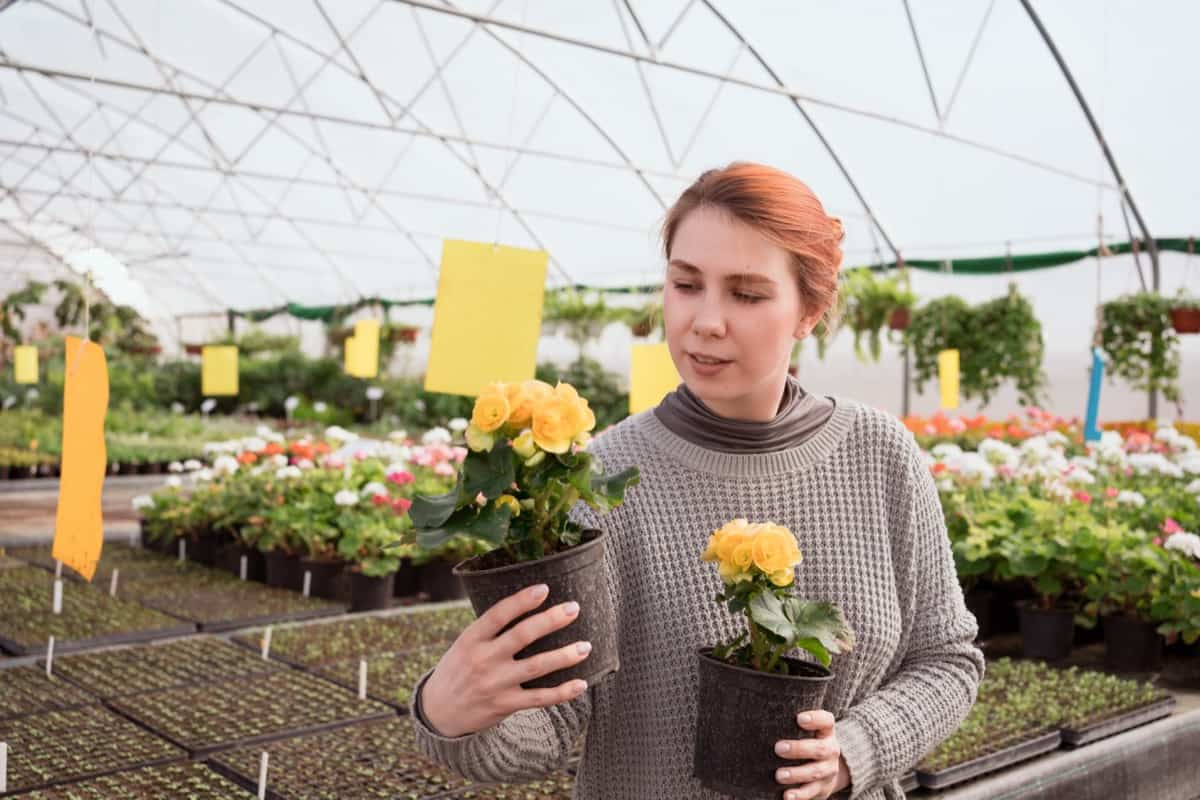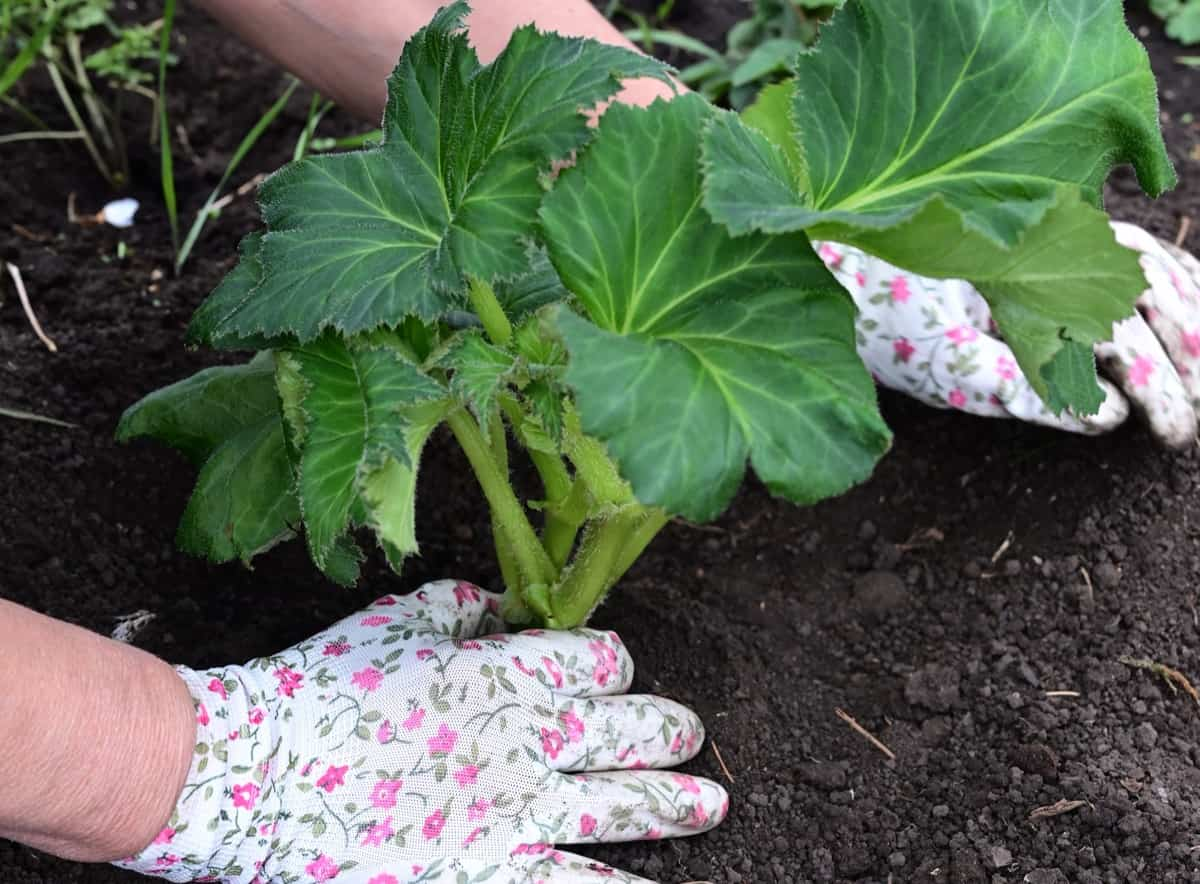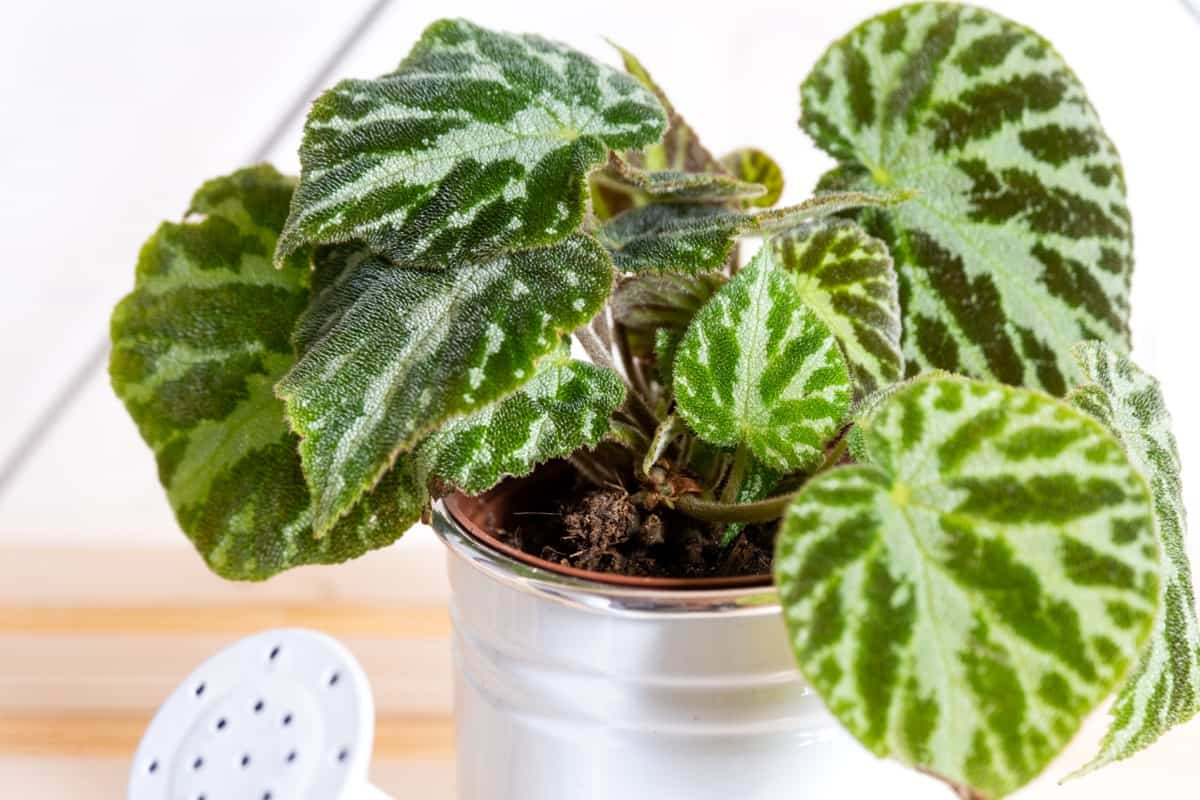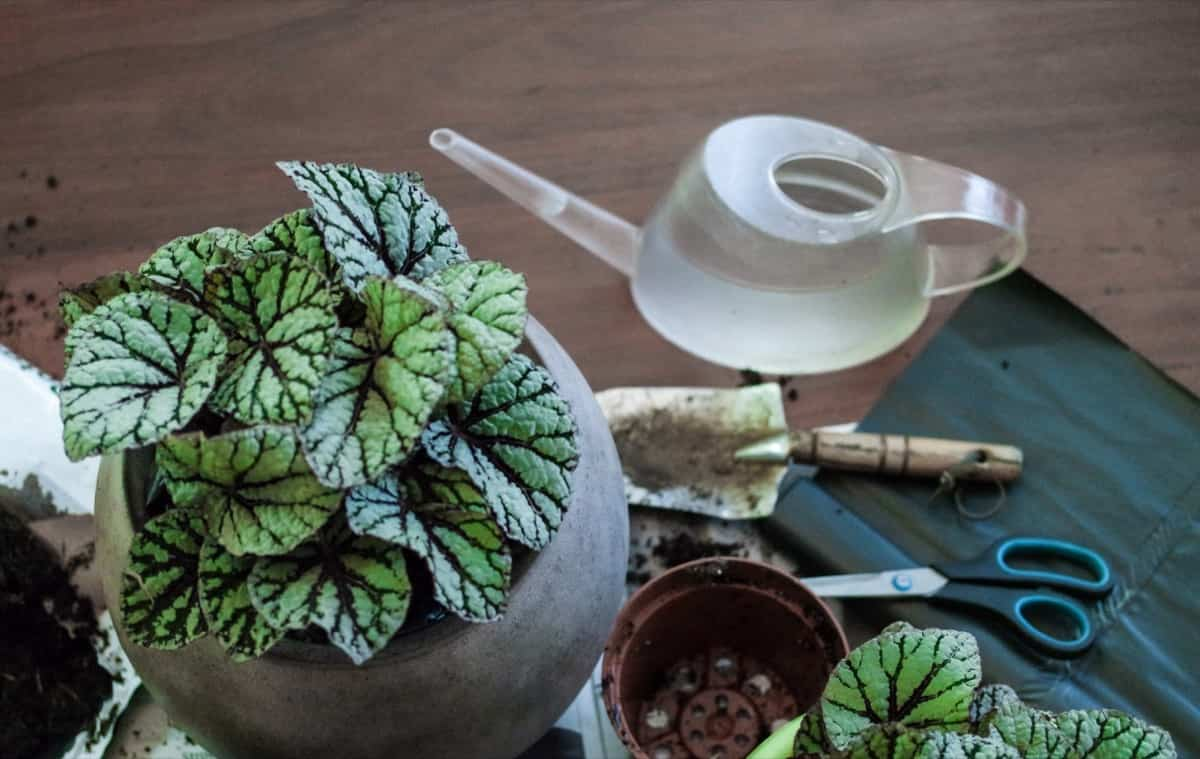If you’re looking for a plant that will add color to your garden, Begonias are a great option. These flowers come in various colors, from white and pink to red and orange. They’re also relatively easy to care for, which makes them a great choice for beginner gardeners. Begonia plants are easy to care for and thrive in the sun and shade. Many different types of Begonia can be found in the garden. Each type of Begonia has unique characteristics that make it a great addition to any garden.

How to Grow and Care for Begonia in the Garden
Types of Begonia
Tuberous Begonias
Tuberous Begonias are one of the most popular Begonia types. They are easy to grow and care for and have various colors and patterns. Tuberous Begonias are also known for their large, showy flowers. Tuberous Begonias can be propagated from seed, but it is easier to propagate them from stem cuttings or rootball division.
Fibrous Begonias
Fibrous Begonias are the most popular types of Begonias. They are known for their beautiful, brightly colored flowers and ability to thrive in the sun and shade. Fibrous Begonias are easy to care for and make a great addition to any garden.
Hardy Begonias
Hardy Begonias are perfect for adding color and interest to any garden. They come in a wide range of colors, shapes, and sizes, so there is sure to be a Hardy Begonia that is perfect for your garden.
Rhizomatous Begonias
Rhizomatous Begonias are a type of Begonia that has an underground stem system. This means the plant has thick, fleshy roots that store water and nutrients. The leaves of rhizomatous Begonias are usually large and have a waxy surface. They are often used as houseplants or in shady garden areas.
Climate Suitable for Growing Begonia in The Garden
If you’re looking for a plant that will brighten your garden with its beautiful flowers, then Begonias are a great option. They come in various colors and are fairly easy to care for. However, there are a few things to remember regarding growing Begonias in the garden. First of all, Begonias prefer a temperate climate.
In case you missed it: How to Grow and Care for Epazote Herb in Your Garden

Second, Begonias need plenty of sunlight. They’ll do their best in an area with at least six hours of direct sunlight daily. If you live in an area with shorter days during the winter months, you can supplement with artificial light to help them get the light they need. Third, Begonias need well-drained soil. They won’t do well if their roots are constantly in water, so choose a spot in your garden with good drainage.
Soil Requirement for Growing Begonia in the Garden
Choosing the right soil and potting mix ensures your Begonias can thrive. Aim for a well-draining mix that’s rich in organic matter. While Begonias tolerate a wide range of soils, they prefer a slightly acidic environment with a pH between 6.0 and 6.5. You can make your own by mixing peat moss, perlite, and vermiculite.
Begonias also appreciate extra humidity, so add sphagnum moss to your potting mix to help retain moisture. Misting your plants regularly or setting them on a tray of pebbles filled with water will also help keep their leaves from drying. Begonias do not like to sit in wet soil, so good drainage is essential. Begonias are not heavy feeders, so a moderate fertilizer is needed. Begonia prefers slightly acidic soils, with an ideal pH of 6.0 to 6.5.
Water Requirement for Growing Begonia in The Garden
Begonias are relatively drought tolerant; however, they will perform best if given a consistent water supply. Water once or twice a week during active growing periods to keep the soil moist but not soggy. Allow the top inch or so of soil to dry out between watering. Begonia plants will wilt quickly when they need watering.
In very hot weather, daily watering may be necessary. To ensure that your Begonias receive the correct amount of water, it is important to know the requirements for different types of Begonias. In general, Begonia plants like humid conditions, so misting the leaves occasionally will also be beneficial. Always check the soil before watering, and only water when necessary.
In case you missed it: How to Grow and Care for Kalanchoe Indoors: A Beginners Guide

Propagating Begonia
From Seed
One of the great things about Begonias is that they can be easily propagated from seed. Propagating Begonia from seed is a fairly simple process, but there are a few things you need to keep in mind. First, it’s important to start with fresh seeds. Old seeds may also not germinate, so starting with a new seed is best. Second, you must plant the seed in a sterile growing medium. This will help prevent disease and mold from taking over your young plants. Finally, you’ll need to provide plenty of light and water for your Begonias to thrive.
Start by filling a small pot or tray with the seed-starting mix to plant Begonia seeds. Then, gently press the seeds into the mix and cover them with a thin layer of soil. Provide enough water and place the pot or tray in a warm, sunny spot. Keep the soil moist, and you should see little sprouts within a few weeks poking through the soil. Once your Begonia seedlings are big enough to handle, transplant them into individual pots filled with regular potting soil.
From Cuttings
First, take a 4-6 inch cutting from a healthy plant to propagate Begonia from cuttings. Cut just below a leaf node and remove any leaves from the bottom half of the cutting. Dip the stem cutting end in rooting hormone, then plant in moistened potting mix. Place the pot in indirect light and keep the soil moist. Roots should form in 4-8 weeks, and new growth will appear. Once your Begonia has been established, you can transplant it into your garden.
Transplanting Begonia seedlings
To transplant your Begonia seedlings, prepare the new pots or beds by filling them with fresh potting mix. If you’re planting in pots, make sure they have drainage holes. Gently loosen the roots of each seedling with your fingers and place them in a pot or bed, ensuring the top of the root ball is level with the soil surface. Once all of your seedlings are transplanted, water them well.
In case you missed it: How to Grow and Care for Honeyberries in Your Garden

Begonia Plant Care
Fertilizer Requirement for Growing Begonia in the Garden
Begonia is a light feeder and does not require much fertilizer to thrive. A light application of a balanced fertilizer once or twice a month is sufficient. Begonias also benefit from occasional applications of compost or other organic matter. Just be sure to use one low in nitrogen, as too much nitrogen will encourage leaf growth at the expense of flowers. Apply fertilizer every four to six weeks or according to package directions.
Pruning Begonia Plants
When pruning Begonia plants, prune when the plant is actively growing. This will typically be in late spring or early summer. However, you can do so anytime to remove damaged or diseased leaves or stems. To prune Begonias, cut any leggy or straggly stems to just above a leaf node (where leaves are attached to the stem). You can also remove any dead or dying leaves or flowers. If your plant is getting too large or bushy, trim some of the main stems by a few inches. Just be sure not to cut back more than one-third of the plant at a time.
Begonia Plant Care in Winter
With some care, you can keep your Begonias alive and thriving throughout winter. Bringing your Begonia plants inside is best if you live in an area with harsh winters. This will protect them from cold temperatures and strong winds. Place them in a bright spot near a window where they will receive indirect sunlight.
During the winter months, Begonias need less water than they do during the summer. Allow the top 2-3 inches of soil to dry before watering again. Begonias do not need much fertilizer during the winter months. Once every month or two is sufficient. Removing dead or dying leaves from your Begonias is important, as with any plant. This will help them to stay healthy and prevent the disease from spreading.
Pests and Diseases of Begonia and Their Control
Pests are always a problem when growing plants; Begonias are no exception. A few common pests attack Begonias, and identifying and controlling them is essential to keeping your plants healthy. One of the most common pests in Begonia plants is the aphid. The aphids are small, soft-bodied insects that can be green, black, brown, or even yellow. They suck the sap out of plants, which can weaken and even kill them.
In case you missed it: How to Grow and Care for Primrose in the Backyard

The best way to control aphids is to remove them by hand. You can use neem oil to kill them. Another common pest is the whitefly. Whiteflies are small white insects that fly around and feed on the leaves of plantYou’lly can cause the leaves to turn yellow and drop off. Whiteflies can also spread diseases from one plant to another. You can use yellow don’ty traps, insecticidal soap, or neem oil spray to control whiteflies. You’ll need to treat your plants regularly until the whiteflies are gone.
If you find any pests on your Begonias, act immediately, so they don’t have a chance to do too much damage. Begonias are relatively easy to grow and care for but susceptible to a few diseases. The most common problems are powdery mildew, stem rot, and leaf spot. Powdery mildew appears as white or grayish-white powder on the leaves of Begonias. It is most likely to occur in humid or shady conditions.
To prevent powdery mildew, water Begonias from below and avoid getting the leaves wet. If powdery mildew does appear, treat it with a fungicide designed for powdery mildew control. Stem rot is another fungal disease that can affect Begonias. It appears as brown or black lesions on the stems and can cause them to collapse. Stem rot is most likely to occur in wet or humid conditions.
To prevent stem rot, water Begonias from below and avoid getting the leaves wet. If stem rot does occur, cut away any affected parts of the plant and treat it with a fungicide designed for stem rot control. Leaf spot is a fungal or bacterial disease that appears as small dark spots on the leaves of Begonias. Leaf spot is most likely to occur in wet or humid conditions. To prevent leaf spot, water Begonias from below and avoid getting the leaves wet. If a leaf spot does occur, treat it with a fungicide or bactericide designed for leaf spot control.
In case you missed it: 14 Beautiful Invasive Perennials That Can Take Over Your Garden

Conclusion
Caring for Begonias in the garden can be a rewarding experience. These plants can thrive in many gardens with the right tips and techniques. Select suitable varieties for your climate and soil type, provide ample sunlight and water, fertilize regularly to encourage growth, keep pests at bay, and deadhead spent flowers to promote continual blooms throughout the growing season. With some patience and effort, beautiful Begonias will fill your garden soon.
- Broccoli Seed Germination and Selection
- Asparagus Seed Germination and Variety Selection
- Seasonal Flower Gardening: Best Practices for Spring, Summer, Fall, and Winter
- How to Grow Hibiscus from Flower
- Plantation Ideas for Home Decoration: A Beginners Guide
- Flower Garden Designs and Layouts for Beginners
- Planting and Spacing Techniques in Papaya: A Beginner’s Guide
- Growing Gold: Essential Techniques for Planting Pineapples
- How to Make Kalanchoe Plant Bushy: Home Remedies and Solutions
- 11 Reasons Why Your Gardenia is Not Blooming: Home Remedies and Solutions
- Eco Elegance: The Guide to Designing a Drought-Tolerant Landscape
- Gardening on a Slope: Strategies for Hillside Landscaping
- Nourish and Flourish: Top Organic Mulches for Thriving House Plants
- Everything You Want to Know about Indian Mogra Flower: Discover Uses and Growing
- Green Thumb Success: Expert Tips for Cultivating Greenhouse Pumpkins All Year Round
- Maximize Growth & Flavor: The Ultimate Guide to Companion Planting in Herb Gardens
- How to Control Rhododendron Problems Naturally: Home Remedies and Organic Ways to Fix Them
- Natural Magic: The Remarkable Benefits of Cinnamon for Plants
- Best Steps to Revive Dying Tulip with Natural and Organic Treatment
- 10 Reasons Why Your Angel Trumpet is Not Blooming: Remedies and Treatment
- How to Fix Periwinkle Leaf and Flower-Related Problems: Natural Remedies and Solutions
- How to Fix Zinnias Leaf and Flower Problems: Discover Natural and Home Remedies
- Organic Steps to Induce Lemon Tree Flowers: A Comprehensive Guide
- Bloom Booster: Crafting the Perfect Homemade Bougainvillea Fertilizer
- Optimizing Growth: A Guide to Applying NPK Fertilizer for Potted Plants
- 10 Best Homemade Fertilizers for Rubber Plant: DIY Recipes and Application Method
- How to Boost Female Pumpkin Flowers: Effective Steps for More Flowers and High Yields
- Transform Your Indoor Garden: Top Benefits of Pink Salt for Houseplants
- 10 Best Homemade Fertilizers for Peacock Plants (Calathea): Easy DIY Guide
- Unlock Blooms: 9 Reasons Why Your Potted Chrysanthemum is Not Blooming
- 8 Reasons Why Your Potted Hibiscus is Not Blooming: Fix it with Simple Solutions
- Unlock Blooms: 9 Key Reasons Your Potted Frangipani Won’t Flower
- 10 Reasons Why Is My Ice Plant Not Blooming: Remedies and Treatment
- 10 Reasons Why My Potted Hydrangea Not Blooming: Treatment and Remedies
- 10 Reasons Why is My Wisteria Not Blooming: Remedies and Treatment
- 10 Reasons Why is My Goldfish Plant Not Blooming: Remedies and Treatment